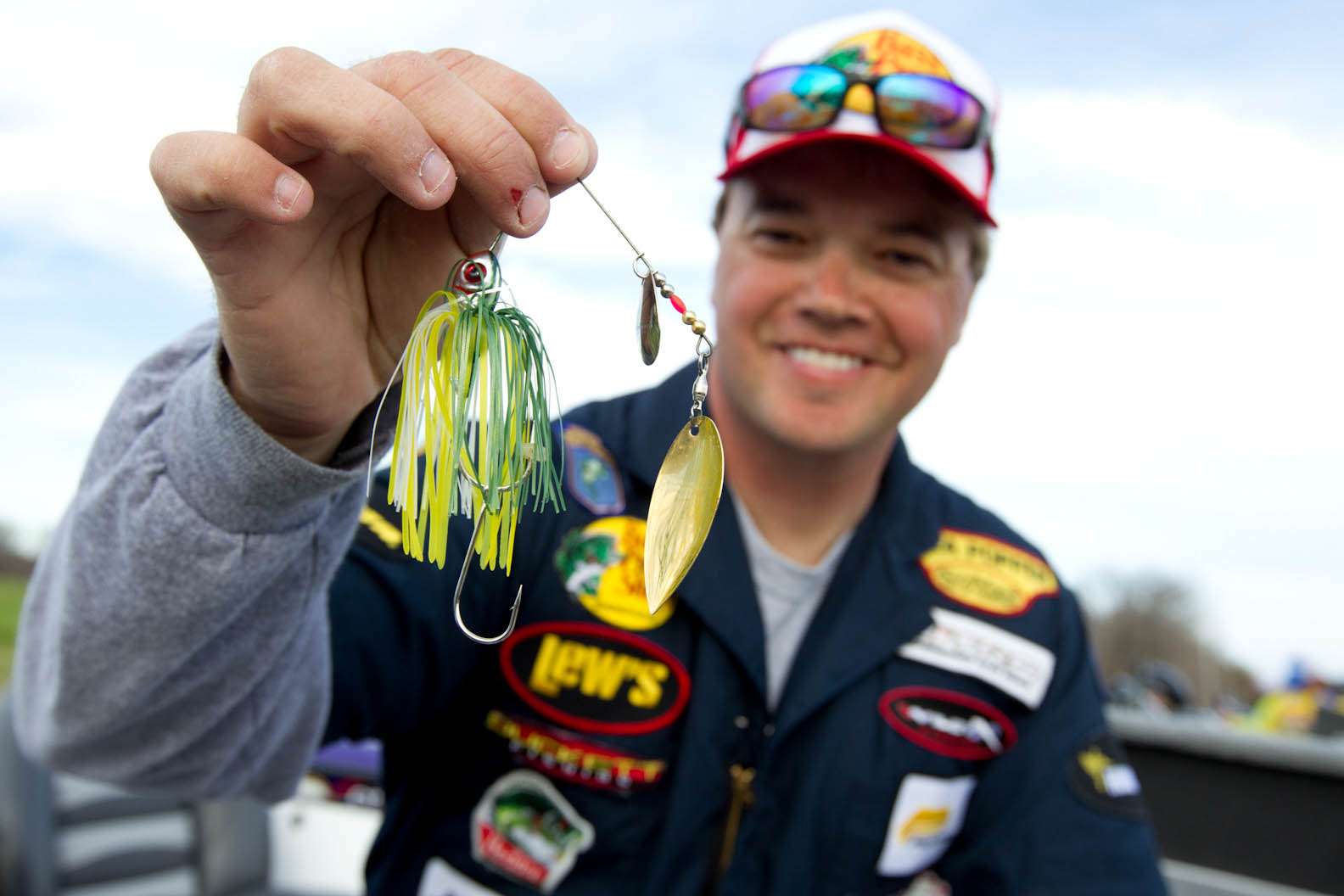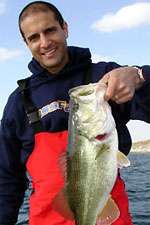
For the last 10 years or so, the patterns of the top five finishers in Elite Series events have been covered in detail on several web sites. This year that’s changing, right here on Bassmaster.com and partner BassGold.com.
If you want to know why, the simple reason is that pattern information is important and valuable, especially when it comes from Elite anglers, and doubly so when it involves the No. 1 bass fishing tournament of all time, the Bassmaster Classic.
Also important is the fact that the Nos. 6-10 finishersusually are pretty close in weight to the top five. At the recent Red River Classic, only 2 ounces separated fifth and seventh, and only 1-3 separated third from seventh.
Not only that, Tim Horton – who finished sixth – was second only to winner Chris Lane in combined Day Two and Day Three weights. So what happened to Horton on Day One? How and where did he and his fellow 6-10 finishers fish?
One more thing: BassGold.com uploaded the first through 11th patterns from the Classic. Why 11th? Two words: Kevin VanDam. Some details of his pattern will be up here soon, but BassGold will have everything.
Tim Horton, 6th
Horton fished a backwater in Pool 5 that had a lot of hydrilla, which he felt was key. He also felt he was on the fish to win, but the wind before Day One muddied almost his entire backwater.
“Only about a 100-foot stretch in the very back was still clean,” he said.
Only Classic winner Chris Lane had more weight than Horton on the final two days.
Horton fished pad stems with stumps, and caught all his fish on a spinnerbait.
Keys:
- Long casts
- Keeping the bait high
Baits:
1/2-ounce Booyah spinnerbait (black/brown)
Interesting:
He had to keep the bait high in the water column and bump the stump on the first cast or the fish wouldn’t bite. The fish were so skittish that on the last two days he tried to let the breeze move him rather than using the trolling motor.
Dustin Wilks, 7th
Wilks fished the crowded McDade backwater in Pool 5. He liked the clearer water, milfoil (and stumps, of course) and deeper water, but he chose that area because he got bit there best in practice.
His fish hit a crankbait much better than a spinnerbait, and he theorized that local anglers fish crankbaits less than spinnerbaits there because of all the cover. His other main bait was a floating worm.
Keys:
- Clear water
- Depth changes
Baits:
- Homemade flat-sided bait (shad pattern)
- Culprit T-Rex floating worm (light pink and merthiolate)
Interesting:
He puts pink and white worms in the same bag for a couple of weeks to get the pink ones to fade a bit. He noted that only certain parts of backwaters are good – almost like they are mini-lakes.
Edwin Evers, 8th
Evers fished two backwaters in Pool 4. Pool didn’t matter to him, but the water did. These backwaters had what he was looking for: clearer, slightly warmer water with lily pad stems and grass.
Keys:
- Vegetation
- Swimming a jig
Baits:
- 3/8-ounce Booyah Jig and Yum Money Craw (Bama magic)
- Follow baits: Yum Wooly Hawgtail or Wooly Bug (watermelon) usually with a 1/4-ounce weight
- Caught a couple on a 3/8-ounce Booyah Vibra-Flx spinnerbait (chartreuse/white)
Interesting:
Evers tried to fish alone, but learned “you just can’t run from boats on that body of water. I tried the first day ’til noon to fish by myself, but with not much fish to speak of I went to where I’d fished in previous years. I knew boats would be there, but I guess you just have to get in there and mix it up.”
Todd Faircloth, 9th
Faircloth fished the Jungle in Pool 4. He also practiced in Pool 5, but liked the better water clarity and two- to three-degree warmer water in Pool 4. He felt the Jungle had the fish to win, but they were split up among too many fishermen to amount to a winning weight.
On the windy Day One, he fished fast with a variety of baits. The next two days he fished slow. He fished in one to two feet of water.
Keys:
Higher water temperature
Baits:
Day One: 1/2-ounce Sebile spinnerbait (white, silver blades); swam 5/16-ounce All-Terrain jig (black/blue) with 5-inch Yamamoto twintail grub or frog-type trailer (black/blue); 4 1/2-inch Yamamoto Swim Senko (watermelon/green pumpkin laminate, 3/16-ounce weight).
Next two days he pitched a Yamamoto Flapping Hog (watermelon/red, 20-lb Berkley 100% Fluorocarbon). He saw a few bass, but mostly fished water that went from clear to stained and he couldn’t see the bottom.
Interesting
He didn’t fish Pool 5because he didn’t find anyplace in which he felt he had a shot to win.
He felt like he made a mistake Day One.
“I left the area I caught a big bag out of the second day and went to another area right around the corner where Greg Vinson was. I wasted a bunch of time idling through there – I should’ve stayed put. If you leave a spot to go to another one, the odds of someone already being there is high. That’s just how the Red fishes that time of year.”
Bill Lowen, 10th
Lowen fished a Pool 4 backwater, and focused on vertical banks. He was counting on fish that were moving up and down rather than in and out.
His fish became harder to catch when the water warmed on the last two days, and he felt the fish bit better on those days right when he had to leave to lock back.
Keys:
- Hard bottom
- Hyacinth mats
Baits:
- 4-inch Tightlines UV tube (black/red)
- Tightlines UV Beaver (black/blue)
- Reins craw (black/blue)
Interesting:
He flipped mat edges with 20- to 25-pound Berkley Trilene 100% Fluorocarbon to get more bites versus using braid.
All these pattern details and literally thousands more are easily searchable – plus a whole lot more – on BassGold.com.





